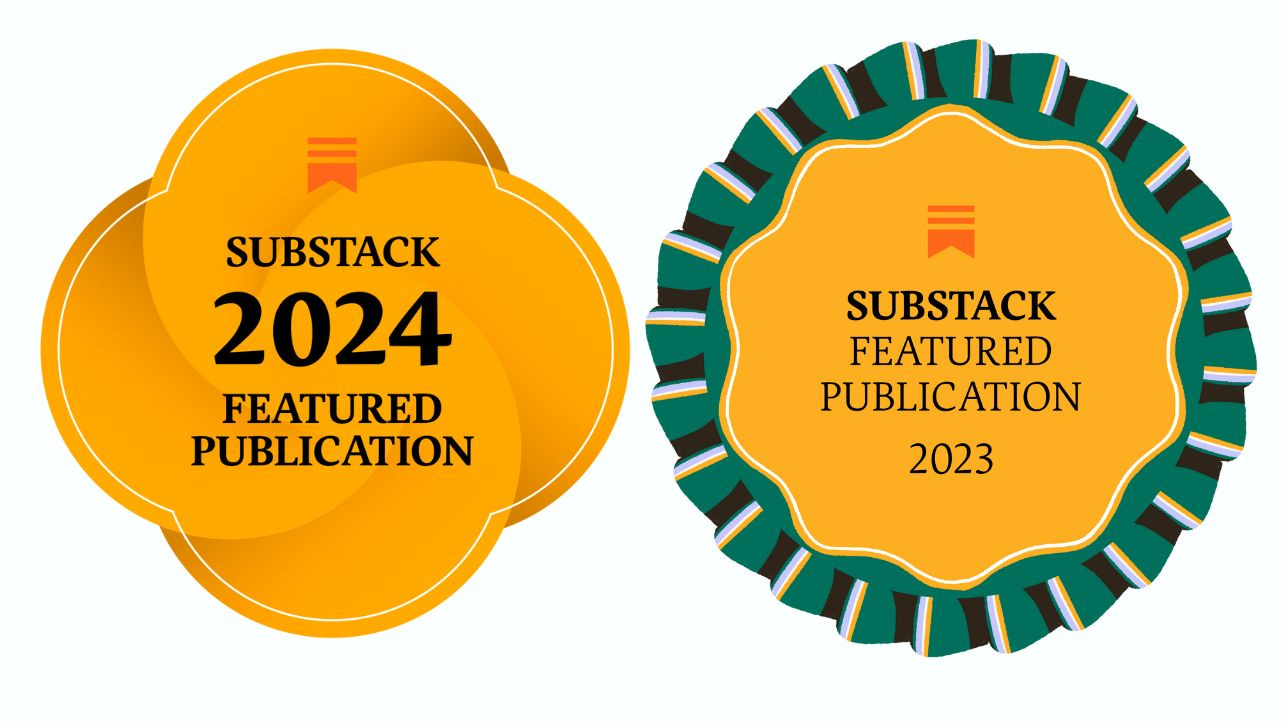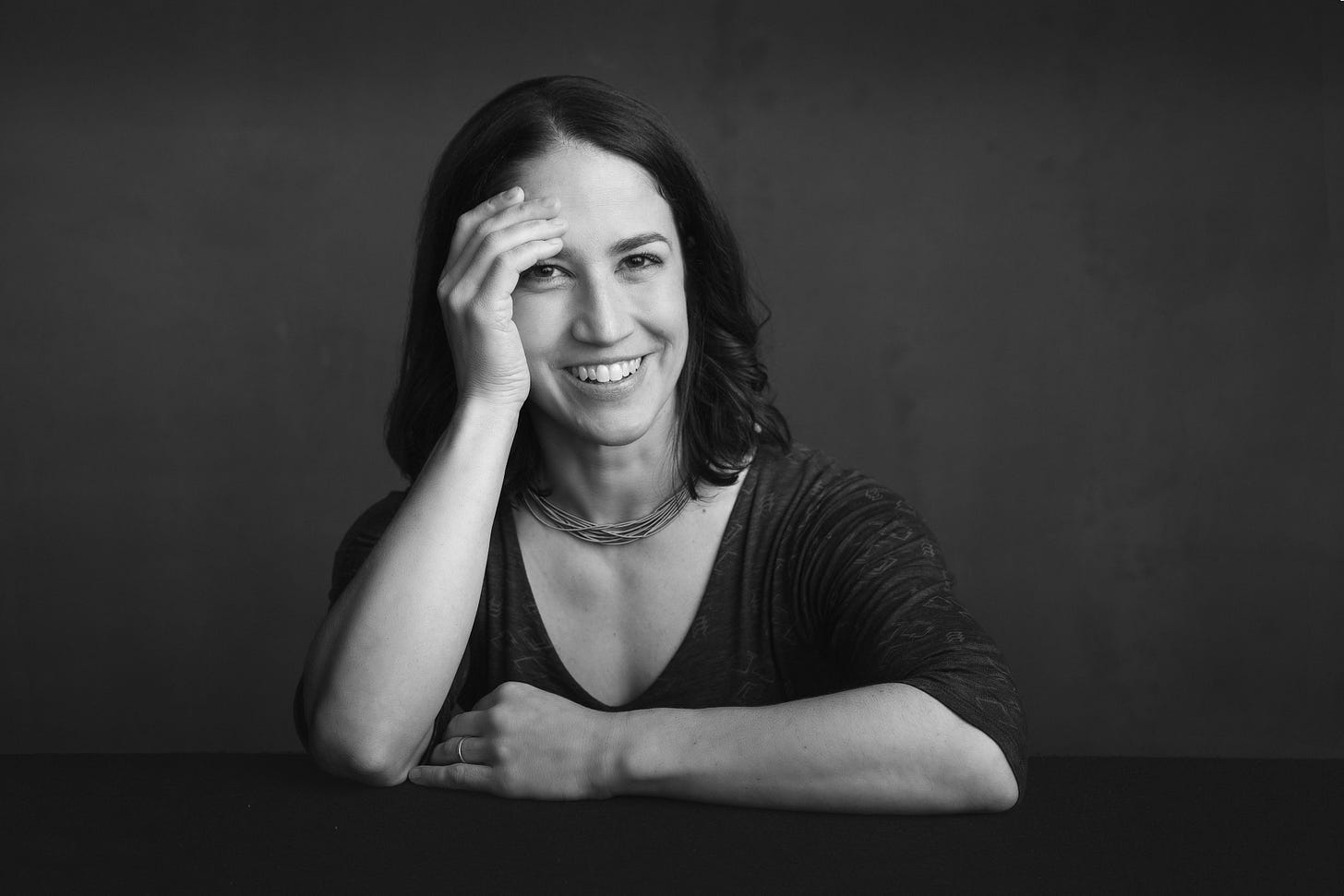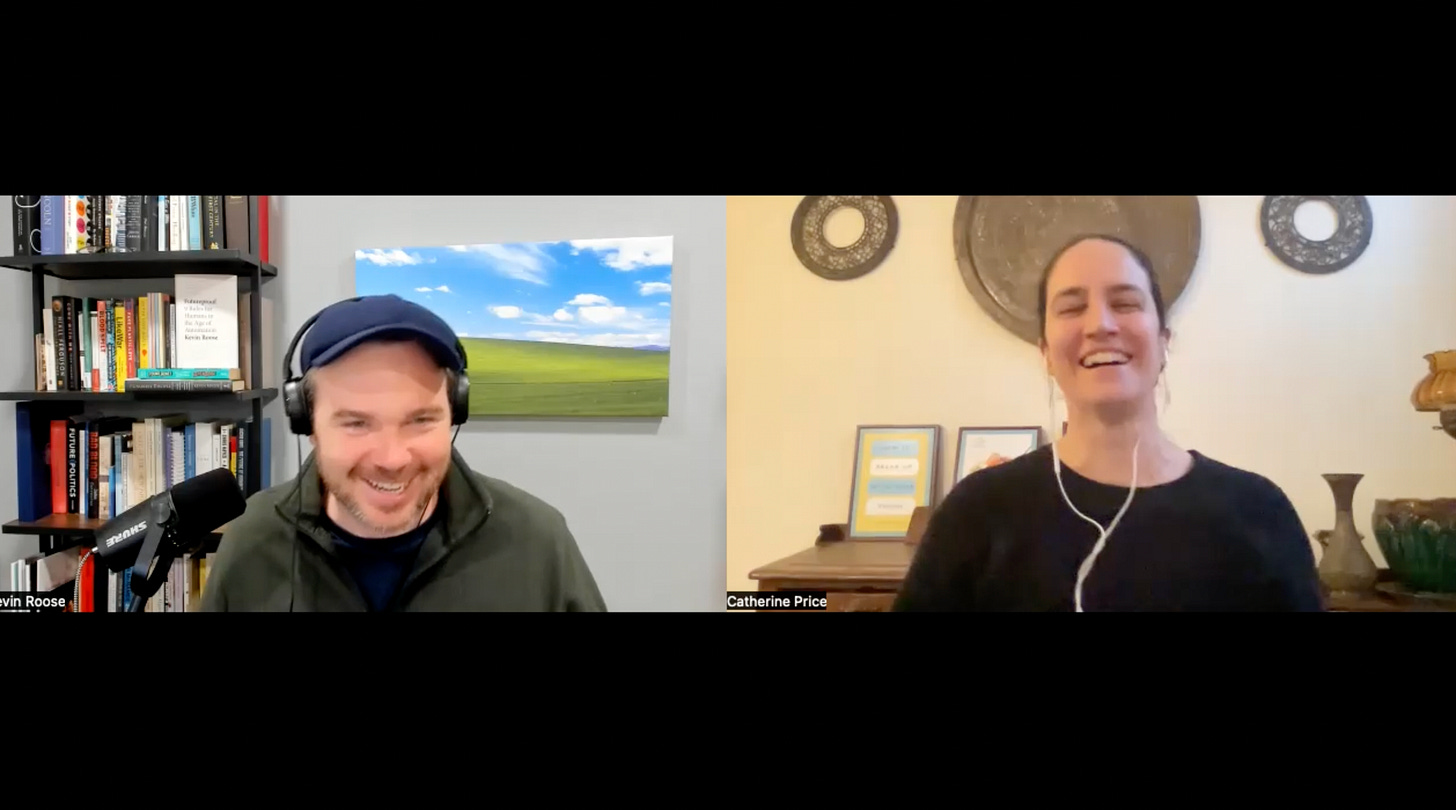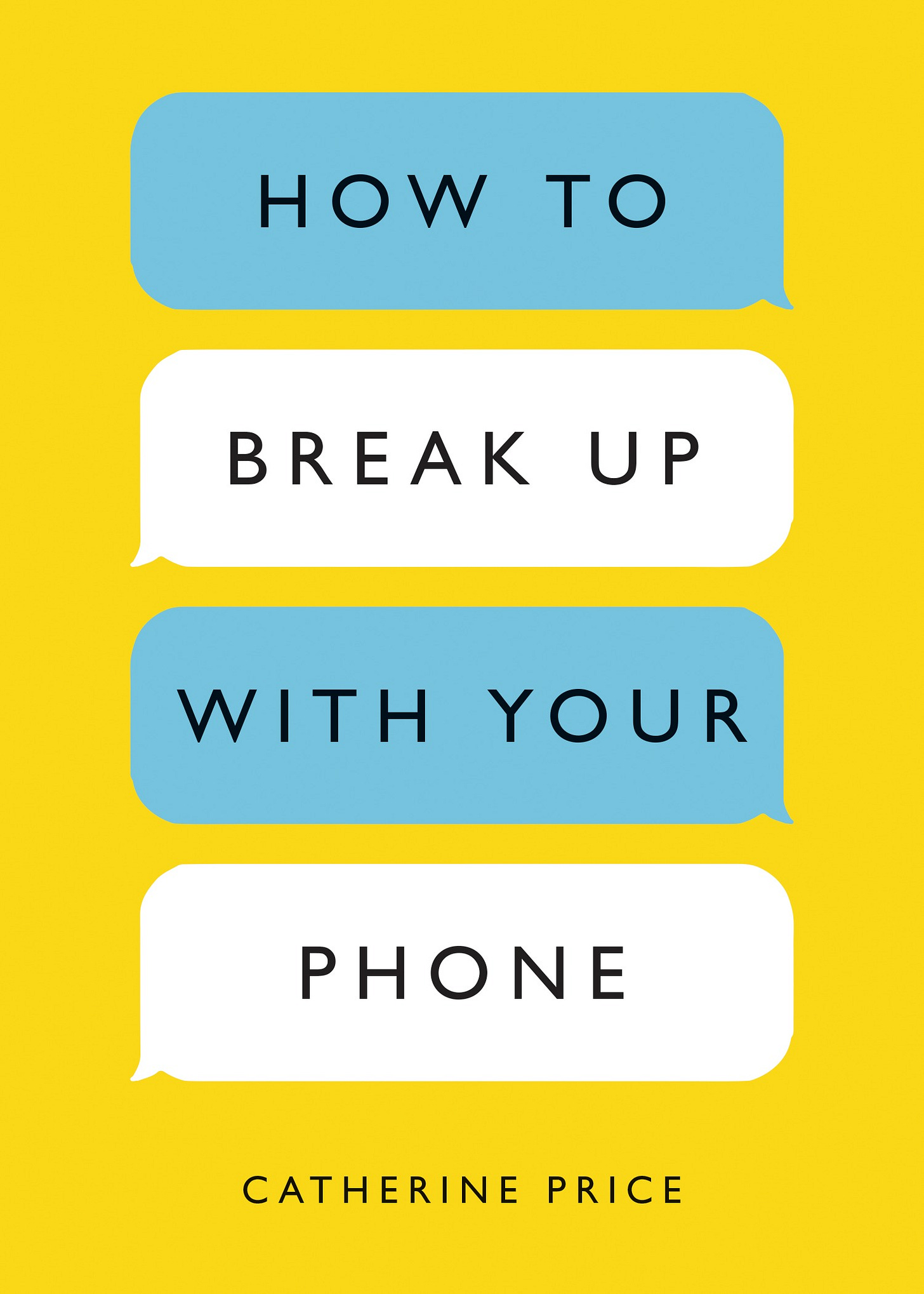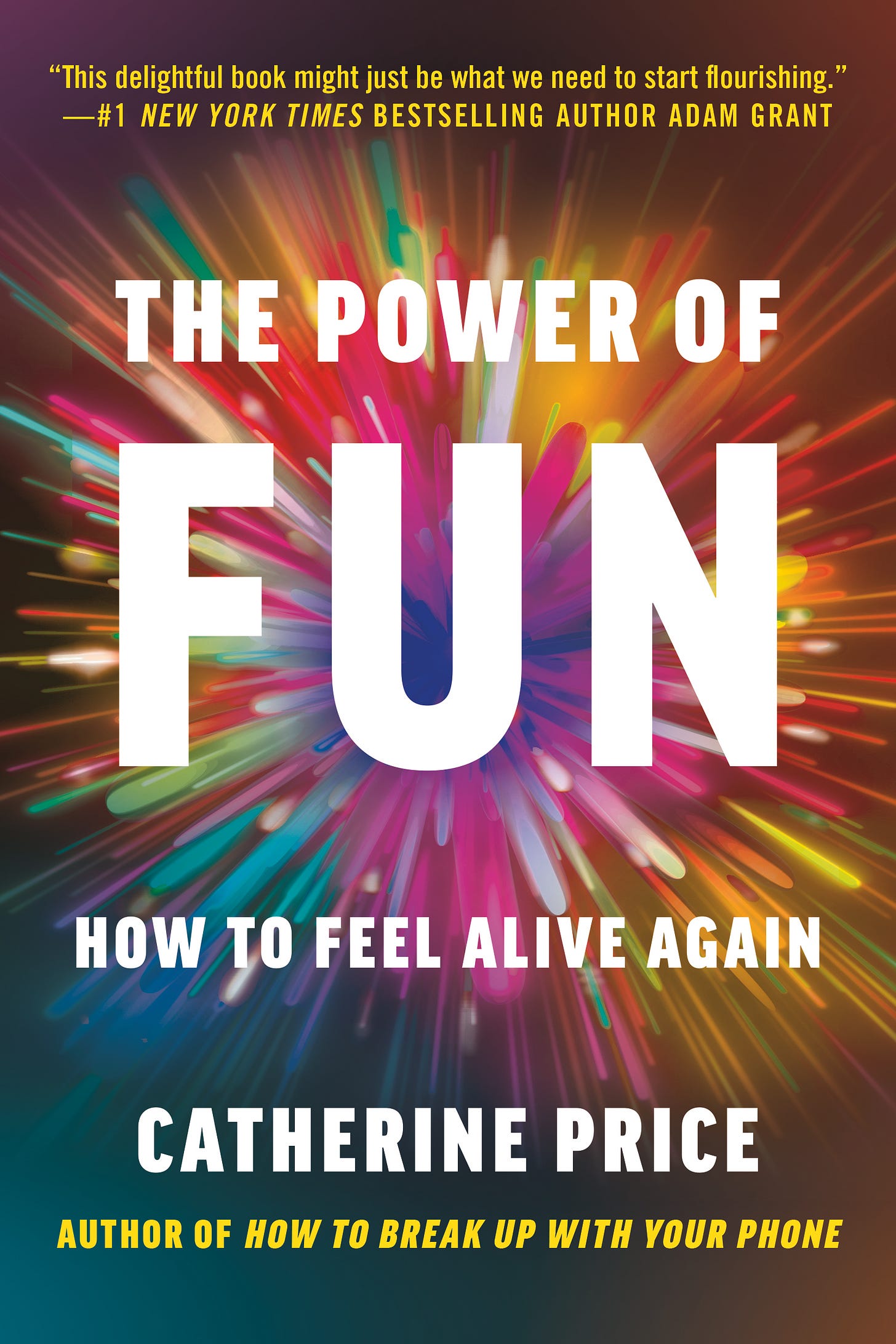Hi. I’m Catherine Price.
I’m a health and science journalist, author, speaker, and generally curious person (in all senses of the word).
Over the course of my career as a freelance journalist, I’ve written articles and books about everything from health and nutrition to mindfulness to travel to technology to fun, and my work has been featured in places including The Best American Science Writing, The New York Times, The Wall Street Journal, Popular Science, The Guardian, NPR, the BBC, CBS This Morning, and Good Morning America, among others. These days, I also spend a lot of time giving talks and presentations, and have had the chance to speak in front of some amazing audiences, including those at TED, The Aspen Ideas Festival, SXSW and Leadercast.
I have a longstanding interest in turning my personal issues into professional projects, which is what inspired me to create the Screen/Life Balance movement, and to write my two latest books: How to Break Up With Your Phone, and The Power of Fun: How to Feel Alive Again — and is now inspiring me to write this Substack.
Why “How to Feel Alive”?
I decided to call it How to Feel Alive because to me, that’s the driving force behind everything I do. It doesn’t matter if I’m writing about phones or fun or vitamins or health or travel or random experiments or really, anything: it’s all part of my underlying mission of trying to learn and laugh and experience as much of life as I can—and I want to share these experiences and insights with you.
As I explain in more detail below, I write about subjects including fun, phones, screen/life balance, community, connection, parenting, and everyday moments of absurdity and delight.
So far, my community includes tens of thousands of people around the world who are committed to scrolling less and living more—and having fun along the way.
I’d love to have you join us.
Subscriber Benefits:
Free subscribers will get access to most of my posts and recommendations, plus 10% off my digital products and courses (including my phone breakup and “find your fun” SMS courses, and the printable companion workbooks for my books).
Want more? Join the Fun Squad
The Fun Squad is my term for my paid subscribers. They’re the people who are convinced of the power of fun and screen/life balance (or who know they need help) and want to go a step further—and they’re also the people who recognize the time and effort that goes into creative work, and who want to financially support it. As a lifelong freelancer, I truly appreciate Fun Squad members’ support, and would not be able to justify writing this newsletter without it.
And also: Fun Squad members get access to other benefits, including:
Full access to all posts and podcast episodes
Special 25% discount on my digital products and courses, including:
Text-message-based 30-Day Phone Breakup Course
Text-message-based “Find Your Fun” course
Printable companion workbook for How to Break Up With Your Phone
Printable companion workbook for The Power of Fun: How to Feel Alive Again
Screen/Life Balance Vacation Survival Guide
Screen/Life Balance motivational image collection
I’m also working on a social media detox course and email breakup course!
Special discounts on recommended products
Access to the Fun Forum community discussion threads, chats, and the ability to leave comments and questions on all posts
Huge gratitude from me for financially supporting my work
Why Substack?
While I’ve had a successful career as a freelance writer, I’ve often felt unsatisfied by my day-to-day professional life. Instead of writing about the things that interested me in a way that felt fun, I found I was spending hours each day formulating pitches and writing emails, trying to sell my ideas to editors and publications whose interests and voices were often very different from my own. Even when I succeeded in getting a yes, the editing process was often exhausting, and the pay was, to put it lightly, not great—and has only gotten worse over time. It was quite demoralizing; at one point, I questioned whether I still wanted to be a professional writer at all.
Then I started playing around with Substack, and was surprised and delighted to find that, for the first time in a long time, I was excited about writing again. I realized that on Substack, not only can I connect directly with readers who appreciate and want to financially support my work, but I can write about the things that I want to write about, in a way that reflects who I actually am—which is to say curious, a bit quirky, and obsessed with spending my short time on this planet feeling as alive as I possibly can. For an example of the type of writing that paid subscribers help support, check out this post.
What I write about:
Screen/Life Balance
Do you feel tethered to email or social media? Do you wish you could spend less time on your phone? (Do you wish your friends and family members would spend less time on their phones?) Are you struggling to figure out how to handle kids and phones? Are you freaking out about AI?
As the author of How to Break Up With Your Phone and creator of Screen/Life Balance, I’ve spent years thinking about our relationships with technology, experimenting, and developing practical, evidence-backed suggestions for how we all can create boundaries and practices that enable us to keep the good parts of technology and minimize or eliminate the bad.
Sample Posts:
How to Break Up With Your Phone (and Why You Probably Should)
Kids and Phones: A Choose-Your-Own Adventure Guide to Smartphone Alternatives
How (and Why) to Have More Fun
Through my research and personal experience, I’ve come to believe that if we want to feel more alive, we need to prioritize fun—which I define as the magical confluence of playfulness, connection and flow. As I write about in my book, The Power of Fun, the more we can incorporate these three states into our daily existence, the more alive we will feel.
Sample Posts:
How to Cope When Life’s a Mess
How to Feel More Connected
I am obsessed with how we can feel more connected — to other people, to our communities, and to ourselves. So if you’re one of the millions of people who are suffering from feelings of loneliness and isolation (or if you even just kind of wish you felt more connected in general), I hope you’ll join me.
(I’m also hoping that this Substack itself will provide a source of connection: paid subscribers have the ability to leave comments, ask questions of each other, share advice, and engage in community discussions.)
Sample posts:
The How to Feel Alive Podcast (Plus Conversations and Q&As)
I regularly ask friends and acquaintances and strangers whose work I admire to have conversations with me for this newsletter about their work. Amazingly, many of them say yes!
Sample posts & episodes:
Avoiding small talk with Charles Duhigg
Can your phone spark delight? (My conversation with tech columnist Kevin Roose.)
My conversation with artist Wendy MacNaughton about art as a mindfulness practice
Delights
I’ve taken up a delight practice, which means that I try to make a point each day to notice, appreciate, and share things that delight me (big shout-out to poet
for this idea!). So you can also expect to hear about some of my delights—and to have me encourage you to start your own delight practice. In fact, one of the benefits of becoming a subscriber is that you’ll get access to our group delight Substack “chat,” where we regularly share our delights with each other. (Think of it as being a social media feed that makes you feel good.Random things that interest, inspire or amuse me
Lastly, I have a lot of interests that don’t necessarily fit into neat boxes. For example:
Travel, experiments, and trying new things: I love traveling, trying new things, and writing personal essays about my adventures—so you can expect some “Grab Bag” posts as well, including some pieces I wrote when my husband and I spent seven months traveling the world before settling down (we thought of it as our “pretirement”), and essays from a collection that I wrote in grad school called “Uncomfortable Experiences of Personal Growth,” some of which apparently were so uncomfortable that no one wanted to publish them. (I thought they were funny?) I’ve also done many odd things in my life that I have I subsequently written about, such as worm composting, forcing my husband to attend a Lithuanian water aerobics class, and spending a week only consuming things that I had Vitamixed. And then there was that one time my husband and I ate roadkill. (Like I said: I’m curious.)
Sample Post: Seeking Control in the Container Store
Health, Nutrition, and Medicine: I was diagnosed with Type 1 diabetes when I was 22 years old, which completely changed the way I think about health and food, and led me to become a health and science journalist. In fact, before I wrote How to Break Up With Your Phone, I spent three years writing a book about the history of vitamins and nutrition. It’s called Vitamania: How Vitamins Revolutionized the Way We Think About Food, so you can expect some snippets from that, too. (Unexpected bonus of this Substack: it prevents scurvy.) These days, I’m getting my dorky medical fix by hosting a podcast from New York Presbyterian Hospital called Advances in Care, for which I interview doctors and researchers who are at the cutting edge of their fields.
Thanks for reading, and for considering becoming a subscriber of any kind. I’m excited about this experiment, and would love to have you—and your loved ones— join us.
To scrolling less and living more,
Catherine Price
PS: If you’d like to learn more about my courses, products, books, and speaking work, please visit CatherinePrice.com.
And if you know anyone else who might like to join us, please invite them:


